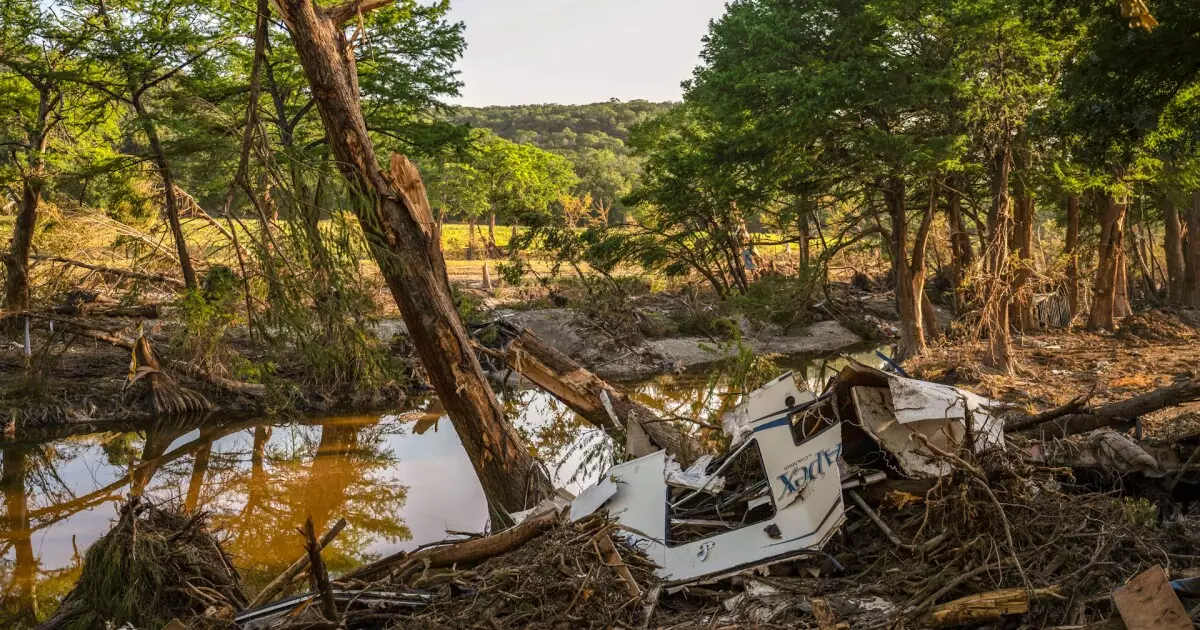Texas faces an recurring nightmare: devastating floods that devastate communities and drain public coffers. While policymakers scramble to respond in the immediate aftermath, their longstanding neglect of proper planning and transparent risk disclosure reveals a dangerous shortsightedness. Instead of addressing the core issue—climate resilience and sustainable land use—they focus on short-term fixes and political posturing. This recurring pattern exposes a fundamental flaw: incentivizing disaster response over preventative infrastructure investment. When local governments and bond issuers fail to fully disclose flood risks, they undermine investor confidence and mislead communities, leading to a false sense of security. The recent floods, which claimed dozens of lives and caused billions in damages, starkly show that Texas continues to prioritize quick fixes over risk mitigation, jeopardizing future generations.
Tax and Bond Restrictions: Politicizing Disasters Instead of Solving Them
In response to natural calamities, lawmakers are proposing measures that ostensibly aim to restrain fiscal excess but ultimately undermine local governments’ ability to respond effectively. Bills requiring supermajority approval for bonds and tax hikes, or even eliminating property taxes altogether, impose unnecessary hurdles on communities attempting to finance critical flood infrastructure. These initiatives seem rooted in political ideology rather than pragmatic necessity. By restricting local officials’ capacity to issue bonds—often the cheapest and most effective financing method—these measures threaten to delay essential infrastructure projects. Additionally, trying to substitute property taxes with progressive taxes like value-added taxes disregards local needs and economic realities. Finance experts warn that such restrictions could leave Texas communities unprepared for the next catastrophic flood, forcing them to make survival decisions with limited resources.
Underfunded Infrastructure and Unrealistic Cost Projections
Texas’s flood mitigation efforts are hamstrung by chronic underfunding and overly optimistic cost estimates. The Texas Water Development Board’s $54.5 billion price tag for flood risk reduction projects—almost half allocated to a single surge protection project—is a clear indicator of the astronomical costs involved in safeguarding such a vast state. Yet, current budget allocations and federal aid fall far short. With only around $3 billion available, the gap between needs and funding remains enormous. The ongoing debate about infrastructure is often motivated more by political expediency than genuine commitment. As Martin Luby notes, bonds remain the most practical financing tool for such capital investments, yet restrictive policies threaten to limit their use. Without sustained investment and a realistic approach to costs, Texas will perpetually lag behind in its flood resilience capabilities, condemning its communities to cycles of destruction and recovery that are both financially and emotionally draining.
Questionable Transparency and Risk Disclosure in Bond Issuance
One of the most unsettling aspects exposed by recent floods is the lack of transparency in bond issuance. Local governments like Kerr County and Kerrville Public Utility Board have been accused of insufficiently disclosing flood risks in their official statements, despite regional flood modeling confirming the danger. This selective transparency not only undermines investor trust but also allows local governments to access financing under false pretenses. The practice not only risks taxpayers footing the bill for damages that could have been anticipated but also perpetuates a dangerous cycle of risk concealment. Proper disclosure must be a non-negotiable standard; otherwise, the public and investors are left vulnerable to future shocks that could have been mitigated through honest communication and proactive planning.
Unrealistic Fiscal Strategies and Political Short-Sightedness
While some lawmakers propose eliminating property taxes by 2031, this sort of reckless fiscal fantasizing ignores the crucial role local revenue plays in disaster preparedness. Costly flood mitigation, emergency response, and recovery efforts rely heavily on local resources—resources that cannot simply be erased or replaced overnight. Shifting the tax burden to the federal or state level, or replacing them with value-added taxes, complicates the landscape without offering clear solutions. Political rhetoric often drives these proposals, prioritizing ideological victories over the pragmatic needs of flood-prone communities. Ultimately, these approaches threaten to weaken Texas’s ability to fund essential infrastructure, leaving vulnerable populations exposed and unprotected.
The Role of Political Will versus Genuine Preparedness
Amid the chaos of disaster response lies an uncomfortable truth: legislative focus is often diverted by contentious issues like redistricting and hemp regulations, overshadowing the urgent need for resilient infrastructure. The upcoming special session, with its drawn-out debates and limited time, appears destined to be consumed by partisan battles rather than meaningful policy solutions. Disaster mitigation, which requires long-term commitment and substantial public funds, cannot be achieved through fleeting legislative attention or symbolic bills. Texas’s future depends on translating political will into concrete action—investment, transparency, and a shift toward sustainable climate policies—none of which seem assured at present. Instead, the state teeters on the brink of repeated cycles of destruction, driven more by political expediency than foresight and responsible governance.

